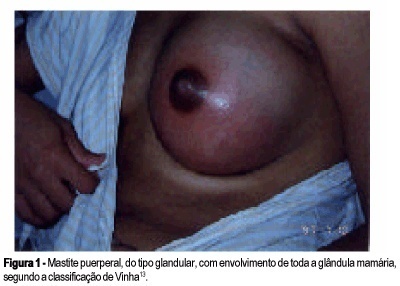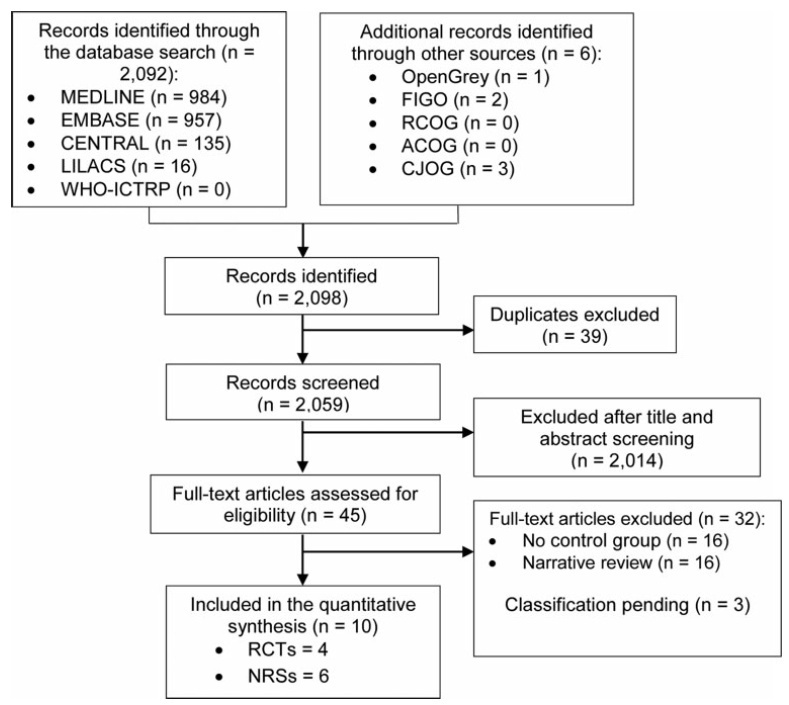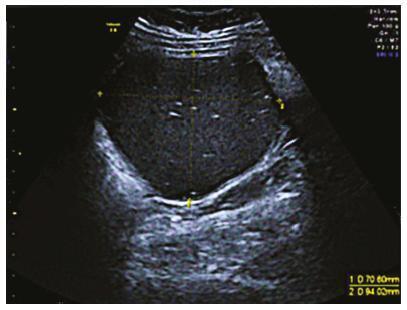Summary
Revista Brasileira de Ginecologia e Obstetrícia. 2009;31(12):627-627
Summary
Revista Brasileira de Ginecologia e Obstetrícia. 2000;22(10):627-632
DOI 10.1590/S0100-72032000001000005
Purpose: to investigate clinical and bacteriological aspects, follow-up and treatment of mastitis in our clinic. Methods: this study was performed at Cleriston Andrade General Hospital. Patients were interviewed regarding personal data, prenatal care, care received during delivery and puerperium and clinical aspects. Their mastitides were classified by Vinha's criteria. The patients with abscesses had them drained for bacteriological study. Culture medium Tryptone Soya Broth was used. Results: seventy nursing mothers were interviewed; 57% of them had given birth for the first time, 57% were between 20 and 29 years old, 51% had not finished elementary school, 63% had income less than the minimum wage, 66% of them had nobody to help with the housework. Out of the seventy females, 50% had not had their breasts examined. Approximately half of them had not been told how to breastfeed (50%) or how to express breast milk (58%). Sixty-three percent had not delivered in institutions designated by WHO as "Children's Friends Hospitals". Engorgement occurred in 46% of the cases and nipple fissures in 47%. According to Vinha's criteria, 44% had lobar, 39% ampular and 17% glandular locations. Presence of Staphylococcus aureus was detected in 55% of the cases. Conclusion: factors such as low schooling, low incomes, no assistance in housework, giving birth for the first time and lack of professional help contributed to occurrence of mastitis.

Summary
Revista Brasileira de Ginecologia e Obstetrícia. 2001;23(10):627-631
DOI 10.1590/S0100-72032001001000003
Purpose: to analyze the pregnancy rates after laparoscopic and microsurgical treatment of hydrosalpinx. Methods: from July 1996 to May 1999 thirty-nine infertile patients with hydrosalpinx were treated according to a previously approved research protocol. They were randomly divided into two groups, according to the previously proposed surgical approach: laparoscopic or open microsurgical salpingostomy. To analyze the results, patients were stratified according to tubal damage, and pregnancy rates in both groups were determined for 24 months. Results: pregnancy rates in our series were 35.3 and 33.3% after laparoscopic and microsurgical salpingostomy, respectively. According to the severity of tubal damage, patients with mildly and moderately damaged tubes got pregnant in 66.7 and 21.7% of the cases, respectively. Cumulative pregnancy rates in one and two years were 25.0 and 34.4%, respectively. There was a single case of ectopic pregnancy, corresponding to 9.1% of all pregnancies. Conclusion: patients with mild and moderate lesions may be initially treated with surgery, and conception success is inversely proportional to the degree of tubal damage.
Summary
Revista Brasileira de Ginecologia e Obstetrícia. 2005;27(10):627-634
DOI 10.1590/S0100-72032005001000010
Arterial hypertension is one of the most frequent causes of maternal death. The most important types found in pregnancy are gestational hypertension, clinically defined by increased arterial pressure after the 20th week of pregnancy, and preeclampsia associated with proteinuria. In the initial phase, the disease is asymptomatic, but when not treated or when the pregnancy is not interrupted, it naturally progresses to serious forms such as eclampsia and HELLP syndrome. Eclampsia is defined by one or more generalized tonic-clonic seizures or coma in a pregnant woman with gestational hypertension or preeclampsia, and without neurological disease. It may occur during pregnancy, labor, and immediately after delivery. It is often preceded by signs and symptoms of imminent eclampsia (central nervous system, visual and gastric disorders). Its association with hemolysis, low platelet count, and hepatic dysfunction had already been reported in the literature of the 1950's. In 1982, Weinstein grouped these alterations as a syndrome under the acronym of HELLP, meaning hemolysis (H), elevated liver enzyme levels (EL), and low platelet (LP) count. The literature differs in relation to the parameter values that define the syndrome. Sibai et al. (1986) proposed a system of laboratory and biochemical diagnosis standards which has been adopted by the Brazilian Health Ministry. Clinical manifestations are sometimes imprecise; common complaints are epigastric pain, general malaise, loss of appetite, nausea, and vomiting. Early diagnosis is exclusively by laboratory tests and should be systematically investigated in women with serious preeclampsia/eclampsia or pain in the superior right abdominal quadrant. Differentiating HELLP syndrome from others with similar clinical or laboratory manifestations is not easy. Differential diagnosis is particularly difficult regarding diseases such as thrombotic thrombocytopenic purpura, hemolytic-uremic syndrome, or acute fatty liver of pregnancy, due to poor clinical history, and similar physiopathological aspects. An understanding of preeclampsia physiopathology, early diagnosis, and precise action at the right moment in situations complicated by eclampsia or HELLP syndrome, allows a better maternal and perinatal prognosis.

Summary
Revista Brasileira de Ginecologia e Obstetrícia. 2004;26(8):627-632
DOI 10.1590/S0100-72032004000800006
OBJECTIVE: to establish the rate of toxoplasmosis soroprevalence in postpartum women, attended in two hospitals of the Public Health System (SUS) in Cuiabá, and its correlation with age, previous abortion and women's knowledge of the disease. METHODS: a cross-sectional study including 205 women with ages from 14 to 43 (mean 22.4) years old, attended in these hospitals for two months, in the first or second days postpartum. Each woman answered a short questionnaire and had peripheral blood sample collected. Blood samples were stored at 20°C until assay. The seroprevalence was determined by quantitative detection of specific IgG antibody against Toxoplasma gondii, using a microparticle enzyme immunoassay. All samples were assayed at the same time. RESULTS: The average number of pregnancies in the women included in this study was 2.2, and the majority of them was pregnant for the first time. The seroprevalence found was 70.7% (165 of 205 women). No statistical correlation was found between seroprevalence and age (p = 0.967) or previous abortion (p = 0.82). Most of the women in this study (78%) did not know about toxoplasmosis and no statistical correlation was found between this condition and seroprevalence (p = 0.49). CONCLUSION: the high seroprevalence found in the present study is in accordance with surveys previously reported in our country and other developing countries. Among the women included in this study, an expressive number (29.3%) is still under risk of contamination. The lack of statistical correlation between seroprevalence and women's age, lack of knowledge about the disease and report of previous abortion is in accordance with some previous studies and in disagreement with others.
Summary
Revista Brasileira de Ginecologia e Obstetrícia. 2021;43(8):627-637
To compare the effects of expectant versus interventionist care in the management of pregnant women with severe preeclampsia remote from term.
An electronic search was conducted in the Medical Literature Analysis and Retrieval System Online (MEDLINE), Excerpta Medica Database (EMBASE), Cochrane Central Register of Controlled Trials (CENTRAL), Latin American and Caribbean Health Sciences Literature (LILACS, for its Spanish acronym), World Health Organization’s International Clinical Trials Registry Platform (WHO-ICTRP), and Open- Grey databases. The International Federation of Gynecology and Obstetrics (FIGO, for its French acronym), Royal College of Obstetricians and Gynaecologists (RCOG), American College of Obstetricians and Gynecologists (ACOG), and Colombian Journal of Obstetrics and Gynecology (CJOG) websites were searched for conference proceedings, without language restrictions, up to March 25, 2020.
Randomized clinical trials (RCTs), and non-randomized controlled studies (NRSs) were included. The Grading of Recommendations, Assessment, Development and Evaluation (GRADE) approach was used to evaluate the quality of the evidence.
Studies were independently assessed for inclusion criteria, data extraction, and risk of bias. Disagreements were resolved by consensus.
Four RCTs and six NRS were included. Low-quality evidence from the RCTs showed that expectant care may result in a lower incidence of appearance, pulse, grimace, activity, and respiration (Apgar) scores<7 at 5 minutes (risk ratio [RR]: 0.48; 95% confidence interval [95%CI]: 0.23%to 0.99) and a higher average birth weight (mean difference [MD]: 254.7 g; 95%CI: 98.5 g to 410.9 g). Very low quality evidence from the NRSs suggested that expectant care might decrease the rates of neonatal death (RR: 0.42; 95%CI 0.22 to 0.80), hyalinemembrane disease (RR: 0.59; 95%CI: 0.40 to 0.87), and admission to neonatal care (RR: 0.73; 95%CI: 0.54 to 0.99). Nomaternal or fetal differences were found for other perinatal outcomes.
Compared with interventionist management, expectant care may improve neonatal outcomes without increasing maternal morbidity and mortality.

Summary
Revista Brasileira de Ginecologia e Obstetrícia. 2019;41(10):628-632
Although mature cystic teratoma (MCT) is benign, malignant transformation (MT) occurs in ~ 1% to 2% of all cases, and usually consists of squamous cell carcinoma (SCC), which accounts for ~ 80% of the cases. Spindle-cell (sarcomatoid) carcinoma (SCSC) is an uncommon type of SCC, comprising up to 3% of all cases. The lack of characteristic symptoms and specific imaging findings may lead to preoperative misdiagnosis. Moreover, the clinicopathologic characteristics, the treatment, the prognostic factors and the mechanism of MT have not yet been well understood due to the rarity of such tumors, especially in women of reproductive age. The authors present a case of a 34- year-old patient with 14 weeks of gestation who was diagnosed with an adnexal mass suggestive of ovarian teratoma. A laparoscopy salpingo-oophorectomy was performed after 6 months of delivery, and the histological exam revealed a sarcomatoid SCC in the MCT.

Summary
Revista Brasileira de Ginecologia e Obstetrícia. 2022;44(6):629-630